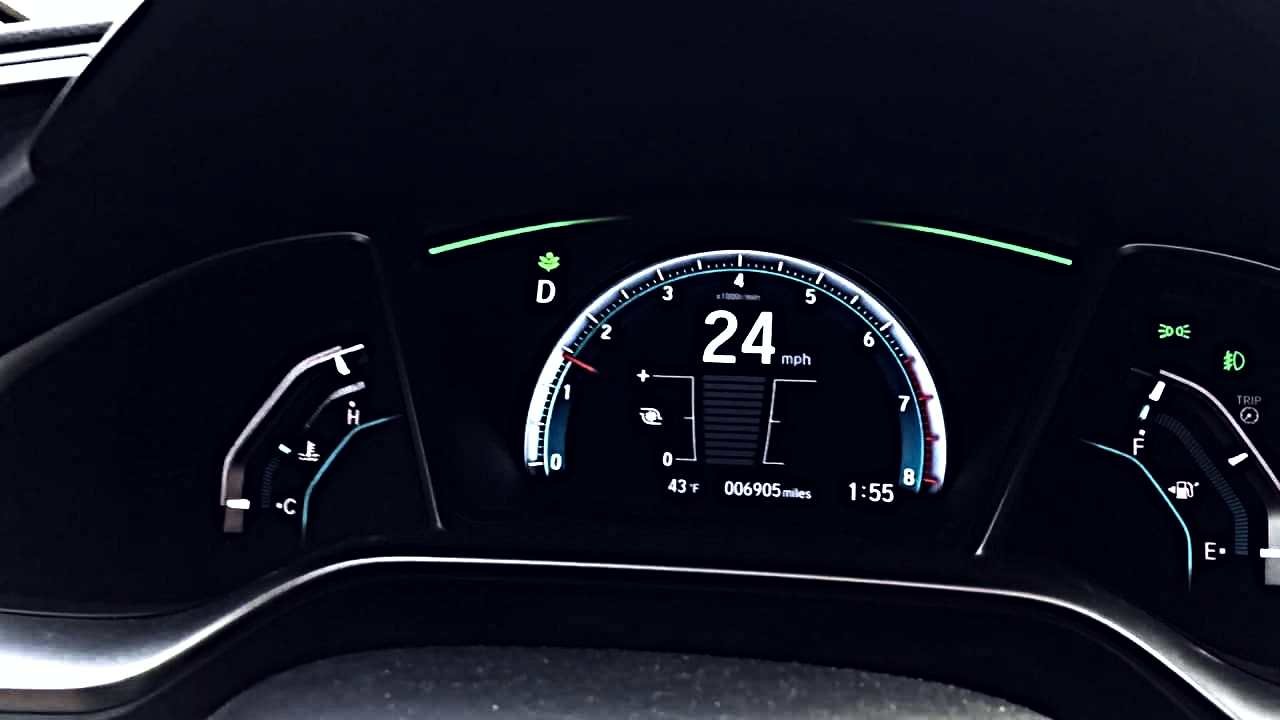What Does Econ Light Mean In A Car (Everything You Need)
In the quest for saving money on gas and reducing our carbon footprint, the Econ Mode feature in present-day cars has become a beacon of efficiency for drivers everywhere. When you turn on the Econ Mode, it’s like unlocking a secret level in a video game where your car suddenly becomes more fuel-efficient and eco-friendly. This feature adjusts the car’s engine and other systems to minimize fuel consumption, leading to not just cost savings but also contributing towards a greener planet.
But, is it safe to drive with the Econ light on all the time? Absolutely. This light is a signal that your vehicle is operating in a mode designed to attain your goals of economy and efficiency without compromising on safety or performance. It’s akin to having a smart assistant under the hood, making subtle adjustments to ensure you get the most out of every drop of fuel.
As a driver myself, I’ve witnessed firsthand the benefits of engaging the Econ Mode. The transition is smooth, almost imperceptible, and it serves as a constant reminder of the small steps we can take toward making a big difference in our environmental impact. It’s a testament to how automotive technology has evolved, equipped with features that help us navigate the road ahead in a more sustainable manner.

What Exactly is Eco Mode?
In the realm of modern cars, a transformative feature known as Eco Mode has been equipped to significantly enhance fuel efficiency. By simply choosing to activate this mode, drivers initiate a cascade of changes under the hood: the power output of the engine is reduced, ensuring it doesn’t work as hard as usual. This adjustment makes the gas pedal less sensitive, which naturally leads to slower acceleration but in a way that’s hardly noticeable when driving at a leisurely pace.
The result? A notable reduction in power consumption and, consequently, slower acceleration leads to less fuel usage and fewer emissions. It’s a win-win, enhancing both the car’s efficiency and its environmental friendliness. Nowadays, this feature works most effectively when maintaining steady speeds, proving that sometimes, slower can indeed be faster in the race against fuel consumption and pollution.
How Does It Work?
Eco Mode, a smart feature incorporated exclusively to enhance the fuel economy of your vehicle while driving, is a marvel of modern automotive technology. With a simple press of a button available next to the steering wheel, drivers can turn this mode on or off, optimizing fuel efficiency on the go. Presently, this technology is equipped in most modern, fuel-operated, and hybrid vehicles, signifying a significant leap towards more sustainable driving practices.
However, it’s notable that Eco Mode is not available on electric vehicles, as they do not use gas. Moreover, it’s important to keep in mind that Eco Mode is entirely different from EV mode, which is available in some hybrid cars. The latter allows the vehicle to run solely on an electric battery, without exhausting any gas, showcasing a clear distinction in how various modes contribute to environmental conservation and efficiency.

When Should You Use the Eco Mode?
The Eco Mode shines as a handy tool for those everyday situations where driving demands efficiency and conservation. The most prominent time to use this feature is when you’re driving your vehicle at a slower pace, normally below 45 miles per hour.
It’s particularly effective in helping you conserve fuel while running errands in town, navigating through city streets with speed limits, or caught in the rhythmic dance of stop-and-go traffic.
Whether you’re leisurely making your way across town or patiently dealing with the crawl of urban congestion, activating Eco Mode can significantly reduce fuel consumption, making it an ideal choice for those seeking to optimize their driving efficiency and reduce their environmental footprint.
When Should You Turn It Off?
While Eco Mode is a fantastic feature for optimizing fuel efficiency during routine drives, there are situations where turning off this mode is advisable for better vehicle performance.
Many people tend to turn off this feature on hot days because it reduces the efficiency of the car’s air conditioning, making the interior less comfortable. In addition, Eco Mode prevents the car from changing gears often, which can hinder performance when driving uphill or when you need to accelerate quickly to merge safely onto a highway or navigate through difficult roads and traffic.
Understanding when to use and when to turn off Eco Mode can significantly enhance your driving experience, ensuring that you always have the right balance between fuel efficiency and the power needed for specific driving conditions.
Benefits of Using Eco Mode in Your Car
Leveraging Eco Mode in your vehicle brings a multitude of advantages, chief among them being improved fuel economy. Although the difference may not always be significant, the cumulative effect of using Eco Mode to reduce gas consumption can lead to considerable savings over time.
By enabling your car to drive more miles per gallon, you’re not just saving money on fuel costs; you’re also contributing to a healthier planet by reducing harmful emissions. Eco Mode works by decreasing the power output of your engine, meaning it doesn’t have to work as hard, which in turn reduces the strain on your car’s engine and battery.
This not only extends the lifespan of these critical components but also enhances the overall fuel efficiency of your vehicle. As a result, you won’t have to fill up your gas tank as frequently, making Eco Mode an eco-friendly option for the environmentally conscious driver.

More Fuel-Efficient Driving Tips
Beyond simply driving in Econ mode to stretch stops at pumps, adopting a few more fuel-efficient driving tips can lead to significant savings.
- Planning your route carefully to ensure you take the most direct route with minimal stops can greatly ease your fuel consumption.
- Additionally, going easy on air conditioning rather than blasting your A/C is a quick way to burn through less gas.
- Furthermore, staying on top of service by sticking to your recommended truck service schedule might not initially seem like a fuel-saving strategy, but ensuring your truck runs at its peak performance is a surefire way to keep everything running smoothly.
- Regular maintenance like oil changes and tire rotations can make a big difference in how your truck drives, so it’s essential not to ignore these crucial appointments.
- These practices, combined with Econ mode, offer a comprehensive approach to maximizing fuel efficiency.
Econ Button on Honda – Is It Any Different?
In the world of automotive efficiency, the Econ Button in a Honda vehicle stands out by significantly altering how the car operates. By pressing this button, available on the left-hand side of the steering wheel, drivers can engage in a mode that optimizes the vehicle’s performance for maximum fuel efficiency.
Once activated, key features like cruise control, air conditioning, and throttle response are altered. For instance, cruise control will limit shifts in speed to maintain a consistent velocity, thus improving fuel efficiency.
Similarly, the air conditioning system is made more efficient by using less energy to sustain the cabin temperature. A distinctive green leaf icon on the dashboard illuminates to indicate whether the mode is turned on or off, serving as a visual reminder of the car’s eco-friendly operation.
This integration of functionality and feedback exemplifies Honda’s commitment to eco-efficient driving without compromising the driving experience.
Econ Light on International Trucks – What You Need to Know
In the realm of International trucks, drivers are presented with two different modes of operation: Economy and Normal.
The latter is your go-to for driving scenarios that demand maximum performance and power, providing you with the ability to accelerate quickly and with ease. On the other hand, the former, better known as Econ Mode, is designed specifically to help increase the efficiency of your vehicle and save fuel.
When engaged, Econ Mode adjusts your truck’s transmission to shift at a lower RPM. This results in smoother and slower acceleration, which directly leads to fuel efficiency.
Understanding how to leverage these modes can significantly enhance your driving experience, offering a balance between power when you need it and conservation when you don’t.
Is It Safe to Drive with Econ Light On?
It is generally considered safe to drive with the Econ Light on, as it encourages fuel efficiency and reduces harmful emissions—a boon for both your pocket and mother nature. This mode optimizes your vehicle’s performance to save on gas without compromising safety.
However, keep in mind there are specific situations when you may need to turn it off; for example, when merging onto a fast-moving highway, where you are required to accelerate quickly for safety. It’s also noteworthy that deactivating the Econ Mode occasionally won’t harm your engine, offering flexibility in its use. Should you experience any issues with the indicator, it’s wise to consider consulting a technician.
This approach ensures that you can benefit from improved efficiency without worrying about potential harm to your vehicle’s performance. Econ Mode in vehicles is beneficial in improving fuel efficiency and reducing emissions, highlighting its role in promoting eco-friendly driving practices.
Similarly, addressing the issue of a check engine and trac off light being on in your vehicle is essential for ensuring optimal performance and safety. Also Knowing what dashboard warning lights mean, especially the ones for Kenworth dash warning lights, helps keep your vehicle running smoothly and keeps you safe while driving.
Also read: What is Tire Learning Active Message?
FAQS
Does Econ mode affect AC?
Yes, Econ mode often affects the air conditioning (AC) system by reducing its power usage to improve fuel efficiency, which can result in less cooling capacity.
Does Econ mode drain the battery?
No, Econ mode does not drain the battery. Instead, it optimizes the vehicle’s performance to improve fuel efficiency, which includes adjusting the energy use of systems like air conditioning but does not negatively affect the battery.
Does Eco mode turn off the engine?
No, Eco mode does not turn off the engine. It adjusts the car’s performance characteristics to enhance fuel efficiency, such as altering throttle response and shifting patterns, but the engine remains running.
Final Word
In conclusion, the Econ Light feature in vehicles, particularly noted in this discussion for Honda and International trucks, serves as an innovative tool designed to enhance fuel efficiency and reduce emissions, making it an eco-friendly option for drivers. While it is safe and beneficial to keep the Econ Mode engaged for the most part, drivers should be aware of specific scenarios where deactivating it may be necessary to ensure optimal vehicle performance, such as when accelerating quickly on highways. Understanding when to use and when to temporarily disable the Econ Mode can help drivers maximize their vehicle’s efficiency without compromising on performance. Should any issues arise with the Econ Light indicator, consulting a technician is advisable to maintain the vehicle’s health and safety standards. Ultimately, the Econ Light symbolizes a step towards more sustainable driving, balancing environmental benefits with the practical needs of daily operation.






